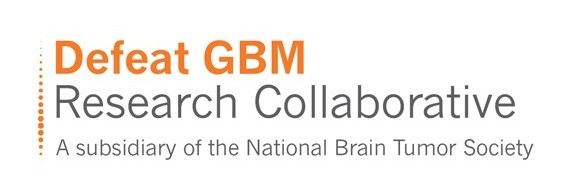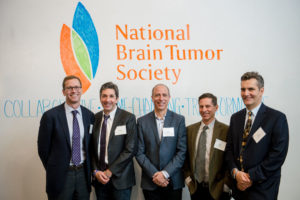In other words, from years of intense study there is actually a good deal we know about what is going wrong in the cells causing GBM tumors to grow so aggressively. Yet, researchers are yet to understand how to exploit this information to develop effective treatments for GBM patients.
“The knowledge base is incredibly deep in many ways,” says Dr. Mischel. “The map of the genes that make proteins, and their alterations, in this cancer has largely been identified. So one would expect or anticipate that this would actually make a difference in the lives of patients. But for a variety of reasons…that information has yet to really benefit patients.”
Thus, while the scientific research underlying the Collaborative is intense, sophisticated, and truly leading-edge, the theory behind it is actually quite simple: In order to develop new, effective treatment strategies for GBM patients, the Collaborative needs a better understanding of how these tumors are protecting themselves from, or escaping, the effects of current treatments; find vulnerabilities in these tumors (their Achilles heel); create better laboratory models to recreate these effects for use in studies; and then test potential drugs against these mechanisms with the goal of identifying ones that could stop them.
And, collectively, in just two-and-a-half years the Defeat GBM team has been able to generate a tremendous amount of progress in this area:
- Through discovery research, Defeat GBM researchers have identified 19 potential novel therapeutic targets for possible new GBM treatment strategies to be developed in the future.
- Through both these new discovery efforts and screening more than 1,000 chemical compounds and existing drugs (and 75,000 combinations thereof) for potential tumor-fighting activity against GBM tumors in newly created laboratory models, the team has identified 16 drugs, categories of drugs, combinations, or treatment approaches of interest to study further to determine if they could ultimately be effective treatments for GBM patients.
- Of the 16, eight (8) classes of drugs have been prioritized for further evaluation and analysis of their tumor-fighting potential.
- Four (4) of the eight, have been further categorized as clinical candidates with hopes of rapid translation to early clinical trials for patients.
- Identified nine (9) possible new biomarkers to help predict and monitor patient response to GBM treatments
Additionally, the team has:
- Developed, characterized, and validated more than 70 new laboratory models based on tissue taken from GBM patients, which more faithfully mimic the behavior of human glioblastoma tumors, for use in preclinical drug screening.
- Published 29 papers and reviews in high-impact scientific/medical journals, which have collectively been cited more than 300 times by other journal publications, demonstrating their importance to providing critical new information to the brain tumor research field
“The Defeat GBM program is reaching a tipping point, with researchers nearing the juncture of moving a number of novel therapeutics into the clinical testing phase,” said Dr. W.K. Alfred Yung of MD Anderson Cancer Center and Defeat GBM’s Scientific Director. “Our team is anxious and excited to continue our momentum and develop a multitude of potential new treatment approaches for patients in desperate need of new options.”
> View the full Defeat GBM 2017 Progress Report (PDF)
As the stakes gets higher with each new discovery, and the push toward the clinic moves closer, so too does the cost and the resources needed to meet the challenges and opportunities ahead (clinical research is typically the most expensive phase of drug R&D). Thus, the Defeat GBM Research Collaborative is currently seeking to expand via partnerships, sponsors, and dedicated supporters that share in the common mission of forever changing the trajectory of this terrible disease.
If you wish to support the Defeat GBM Research Collaborative, please consider donating.




